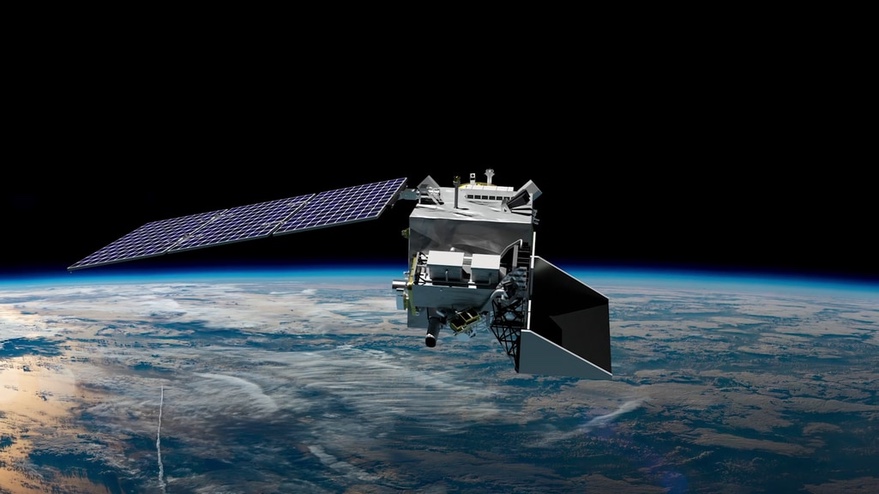Products You May Like
Updated 12:50 p.m. Eastern with NASA statement.
WASHINGTON — The White House released a first look at its budget proposal for fiscal year 2022 that includes an increase in funding for NASA, particularly Earth science and space technology programs.
The 58-page budget document, released April 9, outlines the Biden administration discretionary spending priorities. It provides only high-level details, though, with a full budget proposal expected later in the spring.
For NASA, the White House is proposing an overall budget of approximately $24.7 billion in fiscal year 2022, an increase of about 6.3% from the $23.271 billion the agency received in the final fiscal year 2021 omnibus spending bill.
“This $24.7 billion funding request demonstrates the Biden Administration’s commitment to NASA and its partners who have worked so hard this past year under difficult circumstances and achieved unprecedented success,” NASA Acting Administrator Steve Jurczyk said in a statement about the budget.
The document does not provide a full breakout of NASA spending across its various programs, but does highlight increases in several areas. NASA’s Earth science program, which received $2 billion in 2021, would get $2.3 billion in 2022, a 15% increase. The funding, the document states, would be used to “initiate the next generation of Earth-observing satellites to study pressing climate science questions.”
NASA’s space technology program, which received $1.1 billion in 2021, would get $1.4 billion in 2022, a 27% increase. That funding “would enhance the capabilities and reduce the costs of the full range of NASA missions and provide new technologies to help the commercial space industry grow,” the budget document states. That includes support for what the White House called “novel early-stage space technology research that would support the development of clean energy.”
NASA’s human exploration program would get $6.9 billion in fiscal year 2022, up about 5% from the $6.56 billion in 2021. The document didn’t break out that spending among programs such as the Space Launch System, Orion and Human Landing System (HLS), but said it would support the Artemis program and “the development of capabilities for sustainable, long-duration human exploration beyond Earth, and eventually to Mars.”
The document offered no guidance on a schedule for the Artemis program, noting only that it included “a series of crewed exploration missions to the lunar surface and beyond.” The modest increase suggests that the administration doesn’t plan to ramp up spending on the HLS program as originally envisioned when the Trump administration set a goal of returning humans to the lunar surface by 2024.
“It also gives us the necessary resources to continue advancing America’s bipartisan Moon to Mars space exploration plan, including landing the first woman and first person of color on the moon under the Artemis program,” Jurczyk said in the statement, the first time NASA said that Artemis would fly the first person of color to the moon. The previous administration noted Artemis would send the “next man and the first woman” to the moon.
The brief passage about NASA spending offered little else about funding levels and priorities the White House has for the agency. The document did note that the budget provides funding for a number of ongoing missions in development, including the Mars Sample Return program and the Nancy Grace Roman Space Telescope, an astrophysics mission targeted for cancellation in several previous budget requests by the Trump administration. However, the document does not spell out funding levels for those projects.
The administration also proposed a $20 million increase for NASA’s education programs, formally known as STEM Engagement. That received $127 million in 2021, but had been proposed for cancellation in all four of the Trump administration’s budget proposals. Congress, in each case, rejected the proposal and funded NASA’s education efforts.
Elsewhere in the budget, the White House proposed increasing funding for weather satellite programs at the National Oceanic and Atmospheric Administration by $500 million, to $2 billion in fiscal year 2022. That funding would support what it described as “the next generation of satellites, incorporating a diverse array of new technologies, which would improve data for weather and climate forecasts and provide critical information to the public.”
The proposal does not spell out funding for smaller space-related offices, like the Office of Space Commerce in the Department of Commerce or the Federal Aviation Administration’s Office of Commercial Space Transportation. The document does note that the administration will offer funding to support improvements to management of the national airspace system, including integration of commercial space launches into it.
The National Science Foundation would get $10.2 billion in the proposed budget, a 20% increase from 2021. That would include funding to continue work on the Vera C. Rubin Observatory in Chile, although the document does not mention how much funding would be provided for that or other astrophysics research.
